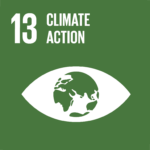In Southeast Asia, food is lost during or just after harvest. Can manufacturers, grocers and consumers do anything about it? Definitely—and it will be good for business, people, and the planet.
In the bustling metropolis and tranquil rural areas of Southeast Asia, food serves as more than mere sustenance; it is an intricate tapestry woven with threads of cultural heritage, familial bonds, and the simple joys of life. Yet, beneath this vibrant mosaic lurks a silent, insidious crisis: the escalating epidemic of food loss and waste.
RELEVANT SUSTAINABLE GOALS



Unveiling The Food Loss and Food Waste Crisis
Food, albeit essential, is a complex entity, threading a delicate line between necessity and excess. In Southeast Asia, the stark reality is that a considerable fraction of food never reaches the plate. This food loss, occurring at various stages from harvest to retail, and food waste, happening predominantly at the consumption level, present not just an economic conundrum but an environmental quandary as well. Improperly managed waste invariably ends up in landfills, emitting methane—a greenhouse gas with a potency four times that of carbon dioxide produced by the entire aviation sector in a year.
Global Commitments, Local Challenges
Under the aegis of Sustainable Development Goal 12, Target 3, the global community boldly commits to halving per capita food waste and minimizing food losses along production and supply chains by 2030. A recent UN Environment Programme report paints a grim picture, estimating that a staggering 931 million metric tons of food might have been squandered globally within a year, enough to satiate the hunger of the food-deprived, twice over.
In Southeast Asia, the household emerges as the principal culprit, with each individual responsible for squandering approximately 82kg of food annually (the UNEP Food Waste Index 2021).
In countries like Thailand, approximately 19% of cereal grains never make it to the market, primarily lost during handling and storage. The Philippines sees about a 33% loss during the rice drying process, spotlighting the urgency of addressing post-harvest losses.
In this latest survey by Singaporean research firm Blackbox, an encompassing exercise that engaged the participation of over 8,500 individuals, the findings were stark and illuminative. A mere 5% of the respondents attested to engaging in the practice of recycling food. This negligible percentage elucidates a conspicuous and disconcerting disparity between the magnitude of the food wastage problem and the level of commitment and active participation demonstrated by the public towards alleviating it.
This data point is not just a statistic; it serves as a sobering reflection of the chasm that exists between the imperative to act and the action being taken on the ground. It reveals a community awareness and engagement gap that needs immediate bridging, spotlighting the imperative for not only comprehensive public awareness campaigns but also initiatives aimed at fostering a culture of responsibility and proactive participation in the battle against food wastage among the denizens of Southeast Asia.
Unpacking The Challenges
Southeast Asia’s food loss intricately intertwines with its agrarian landscape, embedded within the practices of food producers and manufacturers. Several factors exacerbate this issue:
- Climate Change: With the agricultural sector heavily reliant on environmental conditions, the unpredictable and extreme vicissitudes of climate destabilize food production.
- Financial Constraints: A substantial segment of food production is shouldered by small-scale farmers living below the poverty line, often unable to access advanced technologies that mitigate post-harvest losses.
- Perfection Paradox: The pervasive demand for aesthetically pleasing products often results in the rejection and subsequent waste of ‘imperfect’ yet perfectly consumable products.
Navigating Towards Sustainability
Addressing this multifaceted crisis necessitates a concerted effort from all stakeholders, with consumers playing a pivotal role. While a willingness to adopt sustainable food habits is evident, actual practice is lagging, with only 6% to 13% of individuals engaging in sustainable consumption, as per a survey by Singaporean research firm BlackBox.
A McKinsey analysis suggests that a 40% reduction in post-harvest losses in Southeast Asia could yield food output equivalent to 1.8 million hectares of land. The focus, therefore, should arguably be on food manufacturers, primarily farmers. Developing policies and programs to enhance their capacity, coupled with education in agricultural best practices, could be instrumental in reducing food loss.
The 2023 Global Sustainable Development Report advocates a transition towards regenerative, ecological, and multifunctional agricultural systems, emphasizing soil fertility and biodiversity protection. The proposed roadmap includes scaling up agroecological practices, enhancing connectivity to consumer markets, bolstering local agri-food processing, establishing inclusive governance, and capacitating food system actors.
Conclusion
In the verdant fields and bustling markets of Southeast Asia, the silent crisis of food loss and waste unfolds. As the clock ticks towards 2030, the region is at a crossroads, with sustainable, efficient food systems on one side and escalating food loss and waste on the other. The choices made today will invariably shape the food landscape of tomorrow, with implications not just for the region but the entire globe. The tapestry of food in Southeast Asia is vibrant and complex, and understanding its nuances is imperative in navigating towards a sustainable, food-secure future.
You may also be interested in :
Boost Your Food Waste Prevention Business Masterclass With Lightblue Consulting Programme




